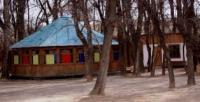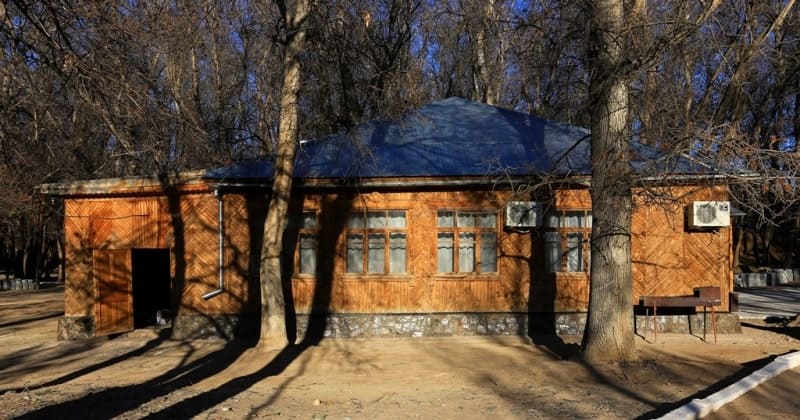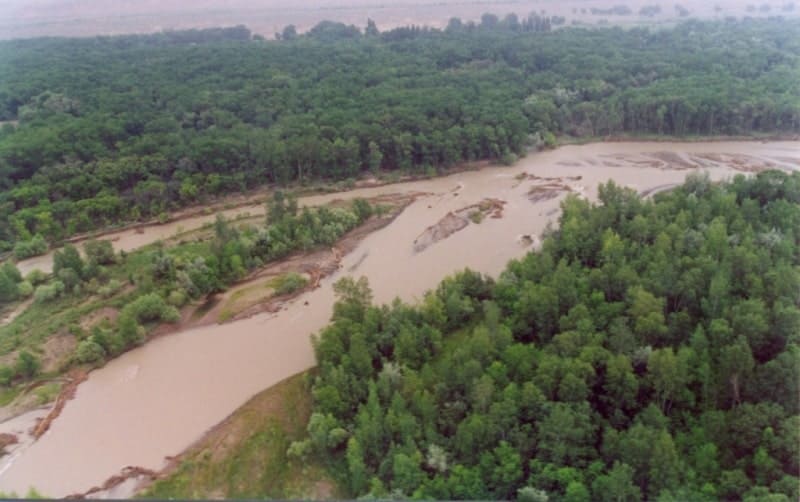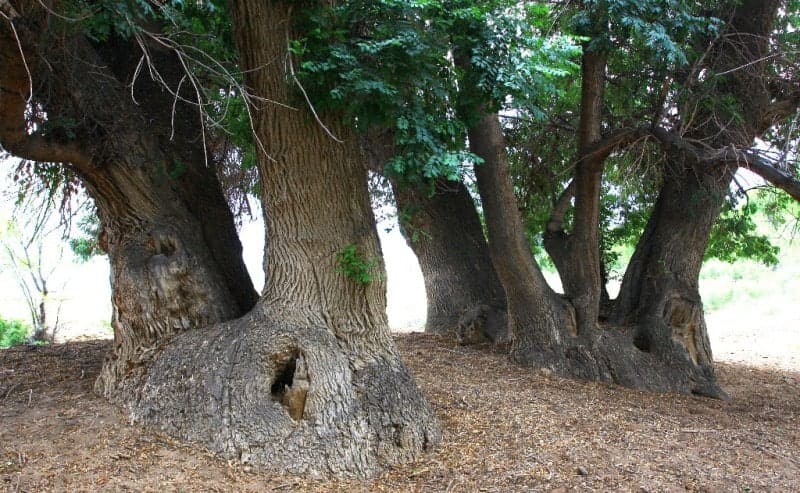Вы здесь
Charyn Ash Grove.


Tours in Charyn Ashen grove.
“Nature is an infinite sphere whose center is everywhere”
Ralph Waldo Emerson.
Trip to Charyn Ashen grove.
Charyn ash grove is located in the Sarytogay tract, in the floodplain of the Charyn River on the territory of the Charyn Natural Park in the Uygur district in the southeast of the Almaty region. The Charyn ash grove was declared a natural monument by the Decree of the Council of Ministers of the Kazakh SSR dated March 19, 1964 No. 447-r. its area is 5014 hectares.
The area of the Ash Grove is 23,874,665.93 square meters, the perimeter of the grove is 45,279.82 meters (data of 02.2022, A.P.). The area of the grove is 5014 hectares (information from the site http://charyn.kz/rus).
The length of Ash Grove is 22 kilometers. The grove stretched from the southwest, from the Chundzhinsky bridge in the northeast to the outlet of the right-bank Aktobe Canal from the river. The southwestern part of the grove begins, from the Chungzhinsky bridge, at an altitude of 744 meters above sea level, ends in the northeast at an altitude of 619.4 meters above sea level.
The widest floodplain part of the grove, 1.5 kilometers long, is located 780 meters northwest of the guest houses located on the right bank of the Charyn River. On the territory of the grove there are three active holiday houses, which can be rented by anyone at an affordable price, cozy and comfortable.
One of these houses, in the past - the cottage of the first secretary of the Central Committee of the Communist Party of Kazakhstan D. A. Kunaev. 3 meals a day can be provided here.
Geographical coordinates of the guest house in the Charyn ash grove: N43°34'58.67" E79°19'39.09"
Charyn Ash Grove is the only relict grove of Sogdian ash (religious) in the CIS countries that has been preserved here since the Neogene period (about 25 million years). Relic ash is the rarest representative of the world's vegetation that survived the epoch of glaciation.
The antiquity of the origin of the Charyn ash is evidenced by the presence of “black” poplar in them (its remains were found near Narynkol in deposits aged 15 million years), large-fruited poplar, and Dzhungar willow. The relic of the forest is also emphasized by the landscape - it is a typical rocky desert.
Sogdian ash (Fraxinus sogdiana Bunge), olive family (Oleaceae) is a tree with an average height of about ten meters, the thickness of the trunk can reach 10 "girths". Individual specimens reach a height of 30 - 35 meters, with a trunk thickness of more than 2 meters, and their crowns are spread over 18 - 25 meters in diameter.
The bark on the trunks is surprisingly similar to “wrinkles, deep, sinuous, storing the events of past times. Ash grows slowly, lives for several hundred years. The vitality of this species is so great that there are trees that are over 700 years old.
It has a wonderful wood, straight-grained, easy to process, beautiful, durable. Due to the fact that the crown of the ash tree is raised high above the ground, and the leaves are long, pointed, rarely located on the branches, the sun's rays easily penetrate into the gaps between them.
Therefore, the entire foliage of the ash tree seems to be filled with light, and this transparency, together with the smooth light gray bark, gives rise to a feeling of radiance, clarity. Hence the origins of the word "ash" - it sounds almost the same not only in Russian, but also in other Slavic languages.
Until relatively recently, this tree was widely distributed in the floodplains of mountain rivers in the desert lowlands of Central Asia. The ash tree reaches its heyday by 30 - 40 years, but many trees in the ash grove are already more than 300 years old.
Sogdian ash has long been a relic species and is now a rarity. In Kazakhstan, this type of ash is also called Turkestan or re-loving because of the confinement of its plantations to mountain river valleys. In addition to ash, in the Sarytogay canyon grows turanga variegated (variegated poplar), which has a valuable physiological property - resistance to salinity and dry air.
A peculiar tree with a twisted trunk (and sometimes multi-stemmed) up to 20 meters or more high. Turanga has a brownish and gray, wrinkled bark and a sprawling sparse crown. A characteristic feature - the leaves vary greatly in shape and size - sometimes narrow and long, sometimes ovate or round, for which it got its name.
The presence of different leaves is due to age variability. Leaves - bluish-green, leathery, rough, dense. Leaves and young shoots never wither, but have the property of self-regulation: as the air temperature rises, they fall off, reducing water consumption.
Turanga can "cry", highlighting "salty tears" in the affected areas that flow down the trunk. This valuable tree species is suitable for planting greenery in populated areas located in the desert zone. The abundance of heat, moisture and food attract many birds to the grove, such as the black stork, tuvik, white-tailed eagle, Semirechye pheasant, brown dove, eagle owl, splyushka, and others.
Some of these species are included in the red lists of rare and endangered birds of Kazakhstan. Of the mammals, encounters with the fox, ermine, steppe polecat, reed cat, wild boar, muskrat, roe deer, tolai hare are possible.
Ash legend.
Ash is an amazing tree, which in the Middle Ages in Europe was not only revered, but also considered witchcraft. For example, the Varangians were sure that the shaft of the spear of their supreme god Odin was made of ash, and harmful sorceresses, who were burned by the hundreds at the stake, when they cooked their brew in cauldrons, stirred it with an ash stick...
Geographical coordinates of Charyn Ash Grove: N43°35'52.14" E79°20'14.98"




Authority:
Alexander Petrov.
Marikovsky P.I. "The fate of Charyn". Almaty: Fund "XXI century", 1997.- 120 pages.
Luterovich O.G. "Three popular excursions around Semirechye". Guidebook, Almaty: "Service Press", 2016.- 92 p.
M. Ginatullin. "Linguistic Dictionary". Almaty: "Rarity", 2010
A.N. Maryashev. "Monuments of archeology of Semirechye and their use in excursions". Almaty, 2002
A.P. Gorbunov. Mountains of Central Asia. Explanatory dictionary of geographical names and terms. Almaty, 2006
T. Januzakov. "Essay on Kazakh onomastics". Publishing house "Science" - Almaty, 1982
"Natural Monuments of Kazakhstan". Remarkable landscapes and their protection.. A.V. Chigarkin, Alma-Ata, publishing house "Kainar", 1980.
"Nature of the Zailiysky Alatau", M.Zh. Zhandaev. Publishing house "Kazakhstan", Alma-Ata, 1978.
Photos by
Alexander Petrov.







